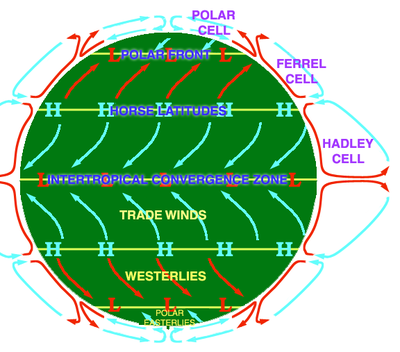Polar front

In meteorology, the polar front is the boundary between the polar cell and the Ferrel cell in each hemisphere. At this boundary a sharp gradient in temperature occurs between these two air masses, each at very different temperatures.
The polar front arises as a result of cold polar air meeting warm tropical air. It is a stationary front as the air masses are not moving against each other. Off the coast of eastern North America, especially in winter, there is a sharp temperature gradient between the snow-covered land and the warm offshore currents.
The polar front theory says that mid-latitude cyclones form on boundaries between warm and cold air. In winter, the polar front shift towards the Equator, whereas high pressure systems can dominate more in the summer.
